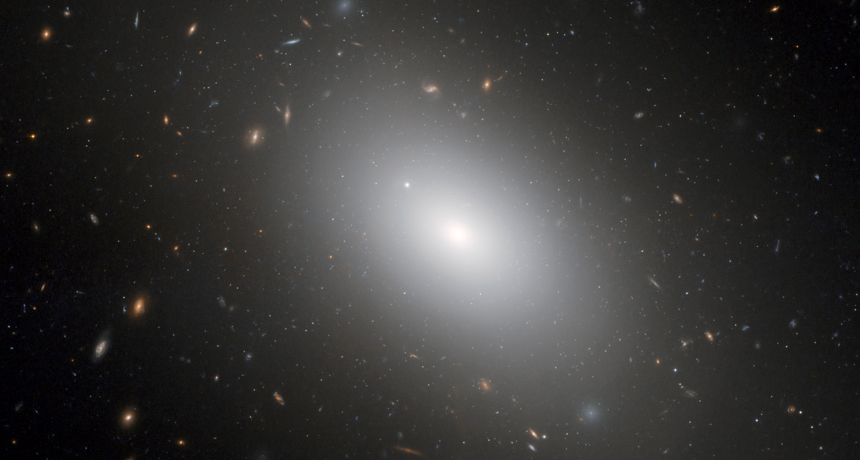
ALL GROWN UP Giant elliptical galaxies like NGC 1132 (shown), which contains trillions of suns and is more than twice as wide as the Milky Way, could have grown from a dense cluster of stars such as one astronomers have identified.
NASA, ESA and the Hubble Heritage (STScI/AURA)-ESA/Hubble Collaboration







